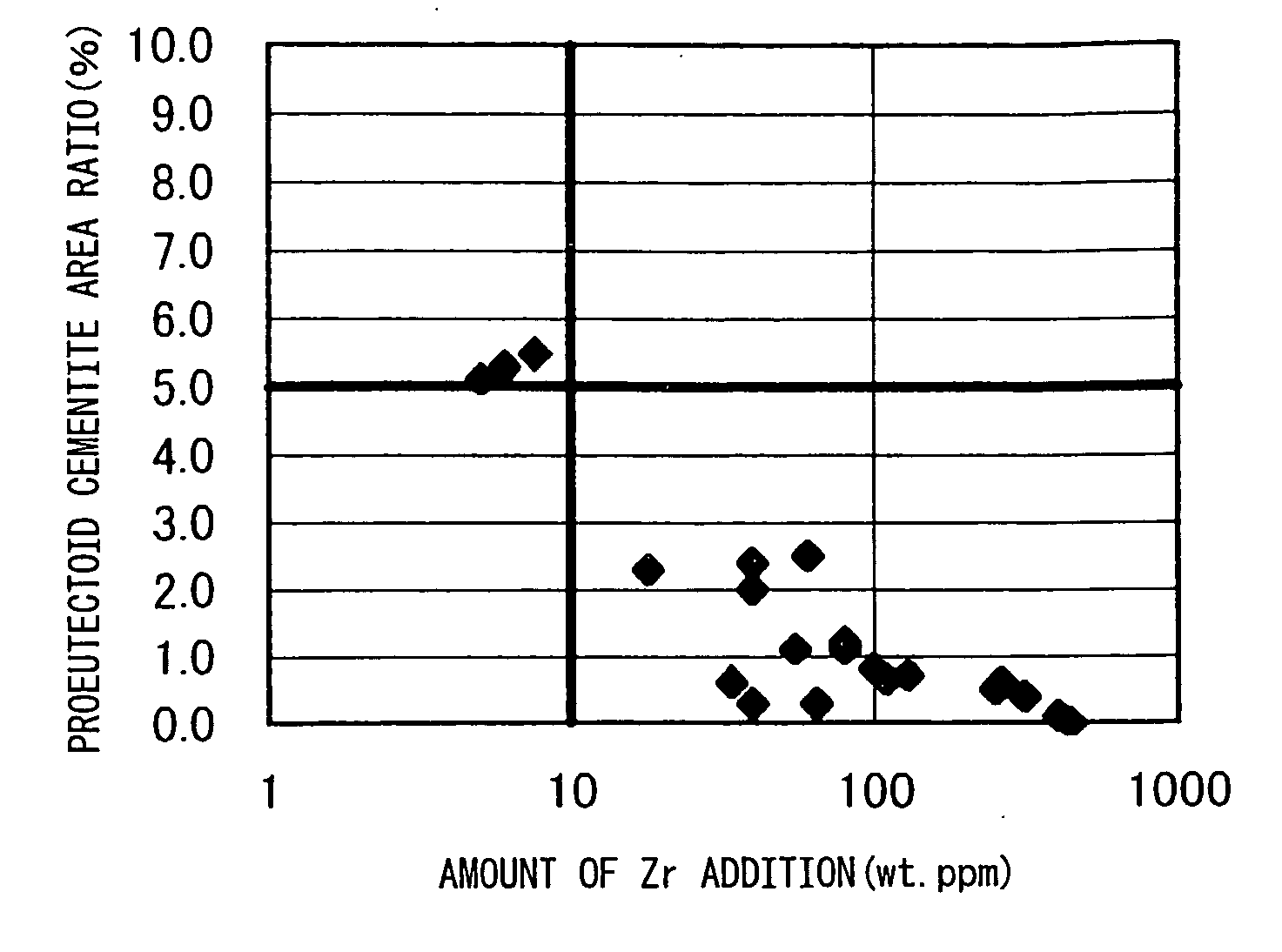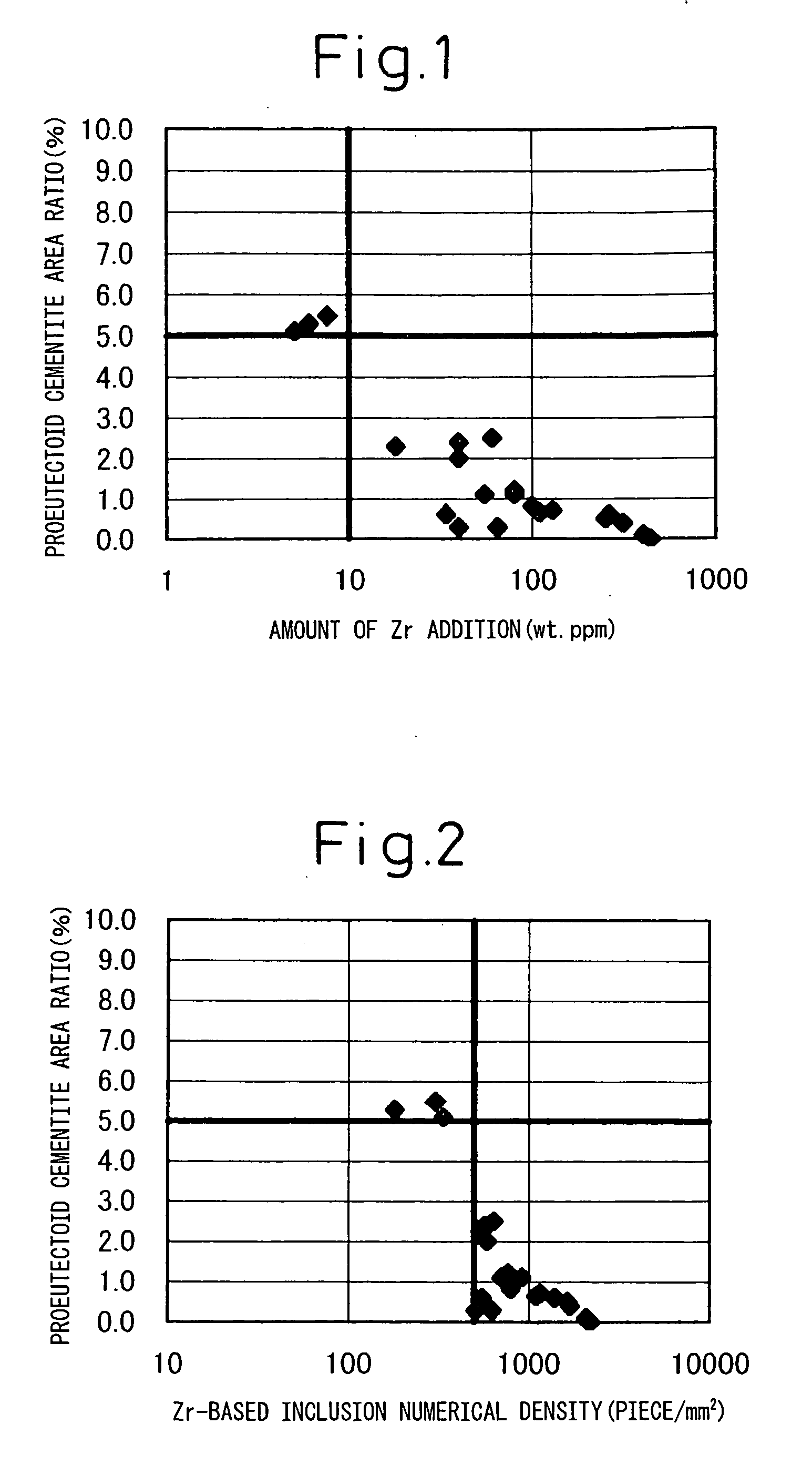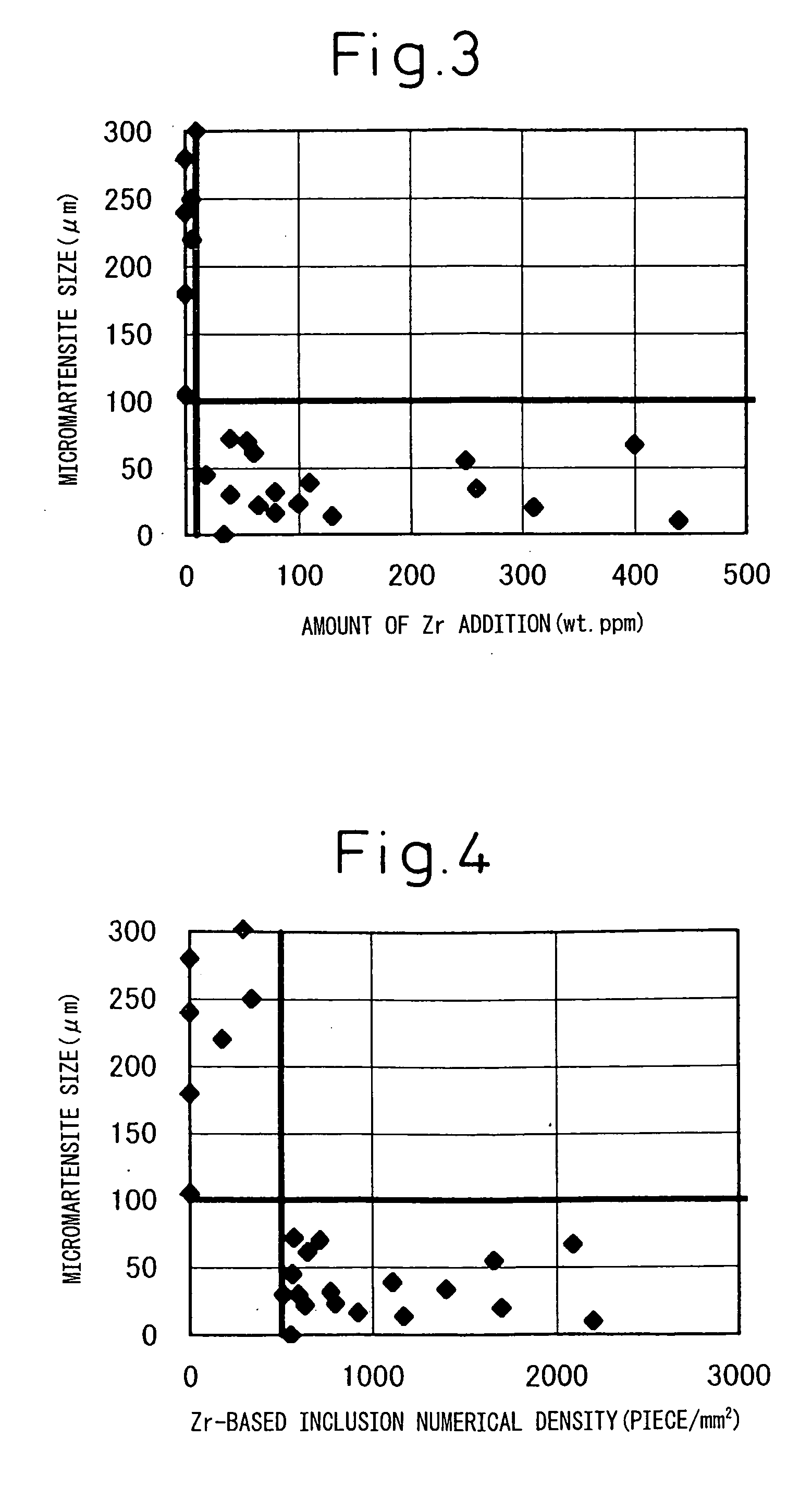High strength, high toughness, high carbon steel wire rod and method of production of same
a high-toughness, high-carbon steel technology, applied in the direction of manufacturing tools, furnaces, heat treatment equipment, etc., can solve the problems of poor toughness/ductility of wire after drawing, drop in productivity or yield, poor toughness after wire drawing, etc., to achieve high strength, high toughness, high strength
- Summary
- Abstract
- Description
- Claims
- Application Information
AI Technical Summary
Benefits of technology
Problems solved by technology
Method used
Image
Examples
example 1
[0065] Next, examples will be given to explain the present invention more specifically.
[0066] The high carbon steel wire rod of each of the chemical compositions shown in Table 1 was hot rolled after continuous casting to obtain steel wire rod of a diameter of 11 mm, then was directly patented or reheated and then patented under various conditions. (Lead patenting conditions: reheating at 950° C.×5 min→isothermal transformation 540° C.×4 min).
[0067] This patenting material was polished by embedded abrasives and chemically corroded by dodecyl sulfonic acid. It was then observed under an SEM to determine the proeutectoid cementite area ratio in the center region (r<0.2 d) of a length (r) from the center (p) of less than 20% of the wire rod radius (d). Further, the material was polished by embedded abrasives and chemically corroded using a Nytal solution and then observed under an SEM to determine the size of the micromartensite grains at the C section. Further, the inventors used TE...
example 2
[0071] Molten steel containing C:0.80%, Si:0.20%, Mn:0.70%, P:0.010%, and S:0.01% was melted in a converter, added with Ti or Al, then added with Zr in the ladle.
[0072] This molten steel was cast by a bloom continuous casting machine. An electromagnetic stirring is performed in the mold. Further, depending on the case, at the end of the solidification, rolling reduction was applied by the light reduction method. The size of the bloom was 300 mm×500 mm. The bloom was cut and evaluated by the above methods for the solidified structure, center segregation, and inclusions. (After casting, the bloom was rolled to a wire rod which was then measured for the area ratio of the proeutectoid cementite.)
[0073] In Table 3, Comparative Steel No. 8 shows a bloom obtained without addition of Zr. Almost no equiaxed crystals were formed. Even if formed, the equiaxed crystals were extremely coarse and the aggregate grain size was also large. As opposed to this, in Invention Steel Nos. 19 to 21 each ...
PUM
| Property | Measurement | Unit |
|---|---|---|
| size | aaaaa | aaaaa |
| size | aaaaa | aaaaa |
| diameter | aaaaa | aaaaa |
Abstract
Description
Claims
Application Information
 Login to View More
Login to View More - R&D
- Intellectual Property
- Life Sciences
- Materials
- Tech Scout
- Unparalleled Data Quality
- Higher Quality Content
- 60% Fewer Hallucinations
Browse by: Latest US Patents, China's latest patents, Technical Efficacy Thesaurus, Application Domain, Technology Topic, Popular Technical Reports.
© 2025 PatSnap. All rights reserved.Legal|Privacy policy|Modern Slavery Act Transparency Statement|Sitemap|About US| Contact US: help@patsnap.com



